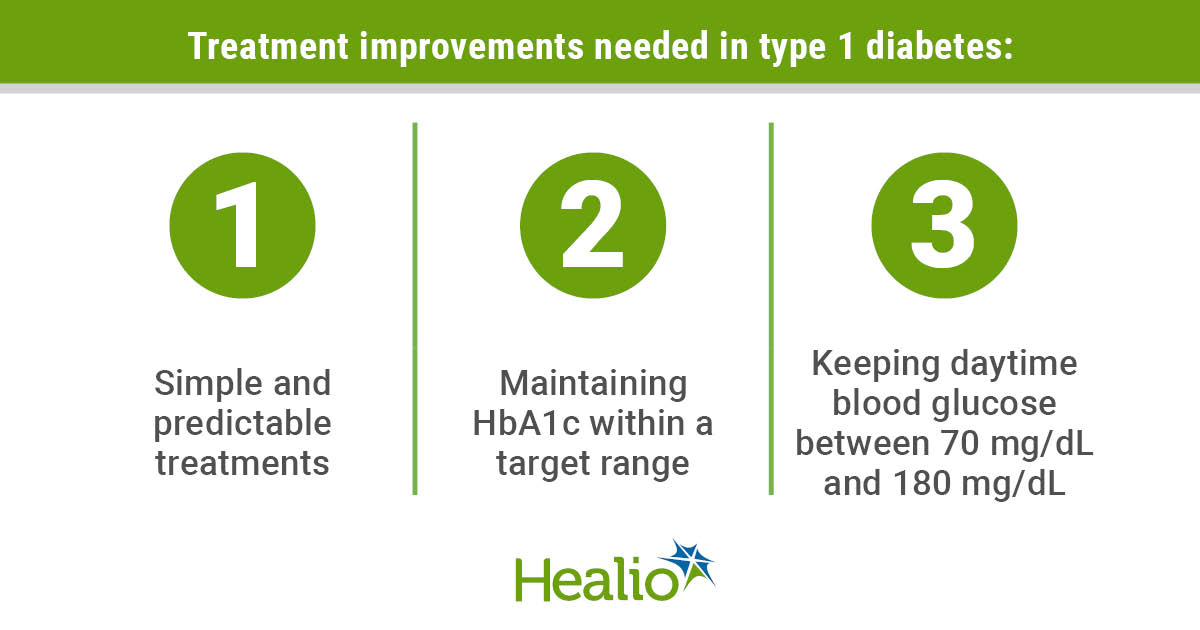Adjunct therapies desired to reduce ‘constant daily burden’ of type 1 diabetes
Adults with type 1 diabetes prioritize HbA1c time-in-target-range, weight loss and simple treatment procedures when evaluating their diabetes care, and there may be a substantial willingness to use adjunct therapies to achieve these goals, according to findings published in Diabetes Technology & Therapeutics.

“Despite these continued advances in management, particularly in the types of devices available, type 1 diabetes remains a constant daily burden for patients,” Jeremy H. Pettus, MD, an assistant clinical professor of medicine in the School of Health Sciences at the University of California, San Diego, in La Jolla, California, and colleagues wrote. “When navigating the risk-benefit ratio, it is important to realize that patients’ and health care providers’ views may differ on the importance of individual risk and benefit factors.”
To assess treatment preferences, Pettus and colleagues sent a survey and received responses from 1,313 adults (median age, 53 years; 67% women) with type 1 diabetes in November 2017. Participants were asked to rate how important and satisfied they were with achieving 15 different outcomes from diabetes treatment. Outcomes included maintaining daytime blood glucose between 70 mg/dL and 180 mg/dL, keeping HbA1c within target range and avoiding severe hypoglycemic events. The survey also included a section in which participants were asked their preference for either insulin only or the addition of 200 mg or 400 mg sotagliflozin (Sanofi/Lexicon) assuming the benefits expected based on clinical trials.
Based on what the researchers called “jobs-to-be-done opportunity scores,” which were on a scale of 0 to 15 with higher scores equating to less satisfaction, the participants identified having simple and predictable diabetes treatments as the outcome they were least satisfied with based on a score of 13.6. In addition, 11 other unmet needs were considered “high priority,” which was indicated by a score between 12 and 15. These included maintaining HbA1c within a target range (13.5), keeping daytime blood glucose between 70 mg/dL and 180 mg/dL (13.2) and making diabetes management less mentally taxing (13.2). Simplifying treatment procedures was the top priority for those in the cohort who used continuous glucose monitoring, according to the researchers.

The ability to produce weight loss, increase time-in-range and reduce HbA1c were considered the most important attributes of a treatment, according to conjoint analysis.
Adjunct therapy of 200 mg or 400 mg sotagliflozin was considered a viable option by 93% of the cohort compared with just taking insulin, and the 400-mg dose was the preferred option when comparing all three, the researchers reported.
“This survey highlights that there are still many unmet needs in type 1 diabetes, including achievement of glycemic control targets, prevention of weight gain, increased time spent in the optimal blood glucose range and a desire for simpler diabetes management,” the researchers wrote. “The benefits of new adjunct therapies appear to be aligned with some of these needs, as more than 90% of respondents would consider taking the medication evaluated in this survey, after appraising its risk-benefit profile.” – by Phil Neuffer
Disclosures: This research was funded by Sanofi US. Pettus reports he has served on the advisory boards for Insulet, MannKind, Novo Nordisk, Sanofi, Tandem Diabetes and Valeritas. He also is a member of the speakers bureau for Sanofi and Valeritas. Please see the study for all other authors’ relevant financial disclosures.
